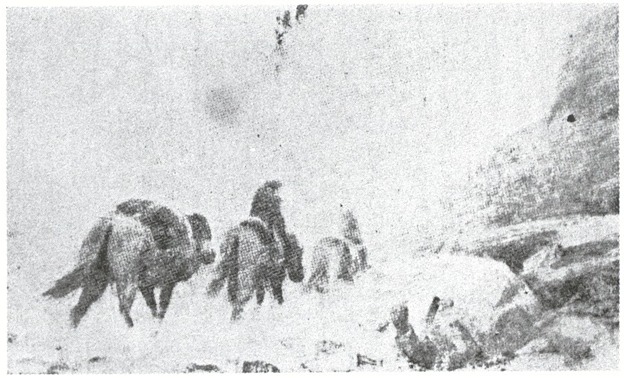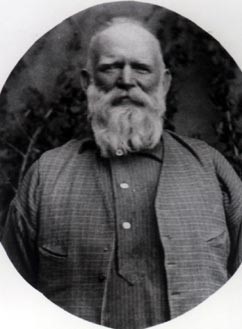Ephraim K. Hanks, Expert Courier

As the Latter-day Saint settlements in Utah became more established in the late 1840s, a need for a good line of communication between their territory and the rest of the country became increasingly important. The federal government established a Post Office in Salt Lake City in the winter of 1849, but it took some time to get a bi-monthly schedule to start running. In 1850, a twice a month service was established between Kanesville, Iowa, and Salt Lake City. In the years to follow, Ephraim K. Hanks would play an important role in this endeavor.
Ephraim K. Hanks' involvement in the transportation of mail across the plains began in 1851. In August of that year, Samuel H. Woodson subcontracted the delivery of mail between Fort Laramie and Salt Lake City to Hanks and another man named Feramorz Little. Contracted for $8,000 a year, the pair arrived at Fort Laramie on the fifteenth of every month to drop off outgoing mail, pick up incoming mail, and escorted any emigrants traveling to Salt Lake City. The trek required skill, resourcefulness, and hard work - all of which Hanks had gained through his many years of experience crossing the plains. The dangers of these trips was not lost on Hanks’ wife, Thisbee Read, who feared for her husband’s safety during his travels. Hanks, too, recognized the dangers, but also felt a sense of duty to accomplish the task that Brigham Young had entrusted to him.
During a seven-year period, Hanks made the 2,400-mile round trip more than fifty times. He once made the journey from Salt Lake to Independence in less than 23 days--the fastest recorded time during that era.
He frequently interacted with American Indians during his travels. Hanks’ quick thinking and friendliness enabled him to survive several potentially perilous encounters with Native Americans. The New York Herald praised Hanks for being the “most daring and intrepid of all Mormon mail carriers” for his ability to get the mail across the route safely and on time even though the “Indians on the route had refused to let others pass freely.”
His wife Thisbee spoke of his dedication and commitment to the job of getting the mail to its destination safely. His trips in the winter occasionally left him stranded in impassable snow. One on of these journeys, Hanks “lived in a cave on one of these trips with the mail, eating nothing but dried beef rolled in flour, until the winter snows melted enough for him to be on his way again.” Hanks set up a ranch near Emigration Canyon, which served as a Pony Express station and a way station for travelers passing through the area. Although no longer there, the approximate location of the Pony Express station is remembered by a historical land marker.
Images


